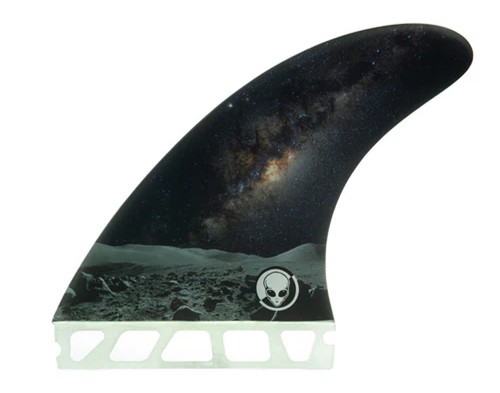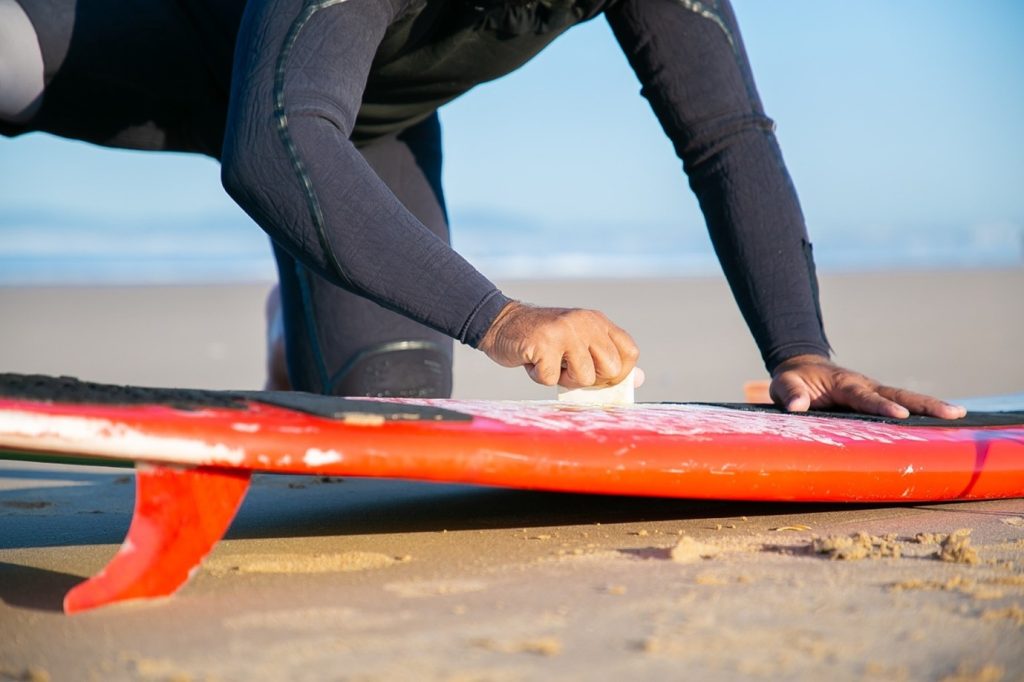Have you paid attention to your longboard fins? They are just as important as the board alone. Speed, control, and stability all improve when you choose the right fins. Ready to learn how to choose them?
Are Longboard Fins so important for surfing?
Perhaps Longboard Fins are the element that many overlook. Everyone wants the board with the best design or the right size, and they don’t understand that fins are more than just accessories:
- The fins are safety elements. They help maintain the direction of the board when surfing, conferring grip. Something significant for long boards.
- They allow surfing at a higher speed thanks to the Coanda principle. This implies that the water slides across the surface of our board and is then expelled through the fins, providing an added boost of speed.
- They also confer features such as stability for noseriding with large fins or maneuverability with small fins.
- Finally, thanks to the fins, we can give our board more or less grip power. This will depend on the size we choose for these.
In short, Longboard Fins allow you to adapt the board to your surfing style. This makes it challenging to choose the right fins. How to find the best option?

Choose your longboard fin step by step.
Now that you know the role of longboard fins, it’s time to choose them. Of course, there are many details to consider, which is why we’ve created a quick guide. This will be of great help to you for the best choice:
What is your surfing style?
This part is critical, as your surfing style directly influences the type of fin you need. Let’s explain it below:
- Are you a noserider? One of those who spend 90% of their time in the first third of the table. Then you’ll prefer significant, wide-base, medium-flex, and low-to-medium rake fins.
- For Smooth Cruising, which takes advantage of small waves to make long, graceful turns, large fins will be best. They should have a broad base and medium-high flex.
- Let’s not forget the high-performance surfers, who squeeze the potential out of longboarding with deep bottom turns and cutbacks. Perhaps they prefer small to medium-sized fins and a pronounced rake.
- Finally, hybrids, off-roaders that nose and then look for turns. They need versatile, medium-sized fins with balanced base and rake.
As you can see, just by paying attention to your style, you’ll have an idea of which longboard fins to choose. However, there are other details you need to consider.
The best configuration
The number of fins, location, inclination, and mounting determine the configuration of longboard fins. In this way, it generates a synergy between them that favors different types of surfing:
- Single Fin, or a single oversized fin near the tail. It is the favorite of noseriders, as it provides a lot of stability thanks to the linear flow of water.
- 2+1 configuration, also called the versatile trio. It has two small fins on the edges and a large central fin. Hybrid surfers enjoy this setup, as it strikes a balance between stability and maneuverability.
- Thruster, the configuration of three fins of the same size. They provide a lot of grip in tight turns and a reactivity that high-performance surfers appreciate, who want to make shortboard-style maneuvers.
- There is also the Twin Fin, with two side fins without the central one. They are also considered retro-style fins and are very useful for both beginners in small waves and those in large waves.
- Finally, the quad configuration, obviously with four fins. It is designed for the most extreme surfers, who face waves of up to 5 feet in speed.
Importantly, surfboards support certain types of configurations. This is because they have default slots, so not all settings are available on all tables.

Materials
As if that were not enough, the materials of your longboard fins also influence the performance of your board. Therefore, you should choose those that suit your style:
- Plastic fins are very flexible and lightweight, and they also stand out for being economical. They are preferred for beginner surfers or those who enjoy smooth, casual cruising.
- Fiberglass is used for rigid base and flexible tip purposes. It has moderate shock resistance and is used by both noseriders and hybrid surfers.
- We now offer high-performance fins made from carbon or Kevlar. They produce a total transfer of energy in tight turns and support a weight of up to 80 kg. That’s why high-performance surfers use them.
There are also bamboo longboard fins. They are an eco-friendly option, with decent performance, but nothing that compares to those already mentioned.
Beware of these mistakes when choosing longboard fins
Especially if you are a beginner, you may make some mistakes when acquiring your board fins. Therefore, you should be aware of the following:
- Choose by appearance. There are fins with quite attractive designs that sell well, but in terms of performance, they leave a lot to be desired.
- Using an improper size. You risk losing control if you use tiny fins for big waves.
- Ignoring insertion systems. Each board has its points for you to install the fins. This means that you should choose a board that also suits your surfing style.
Most importantly, never be afraid to experiment. Perhaps you have a surfing style that you’re currently enjoying, and this doesn’t mean you can’t try something new. You need to get the right longboard fins.
Now you can choose the best longboard fins.
Did you know all these facts about surfing fins? Who knew that such small pieces could be so important? That’s why you’d better use this guide the next time you go to the store.
Luckily, the best surf shop is just a click away. At Luna Surf, we have all the accessories for true wave lovers. Want to know more? Please get in touch with us, and we will be happy to assist you.

Frequently asked questions
Does the position of the fins influence performance?
Yes. Near the tail, they exhibit greater reactivity to turns, while away from the tail, they provide stability during noseriding.
How often should I check the fins of my board?
You should do this at least monthly, checking the screws and cleaning the saltpeter.
Can I mix different brands of fins?
For example, you could put a center fin from one brand and side fins from another. However, you should only do this if they are made of the same material.

